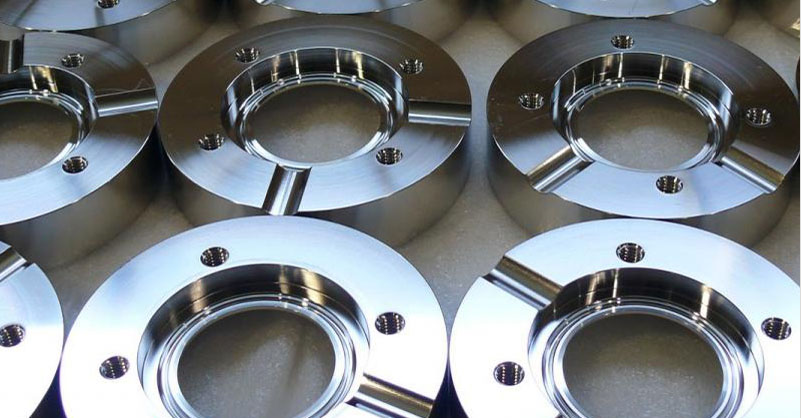From the minuscule threaded standoffs inside our electronics to the massive, high-strength shafts driving industrial machinery, steel turned parts are the unsung heroes of the modern mechanical world. Their cylindrical forms are fundamental to nearly every device that moves, fastens, or transfers power. Created through the precision process of CNC turning, these components represent a perfect fusion of material science and manufacturing excellence.
Choosing the Right Steel: The Foundation of Performance
The journey to a perfect turned part begins with material selection. Steel is not a single material but a vast family, and the grade you choose will dictate the final part’s strength, durability, corrosion resistance, and cost.
1. Carbon Steels: The Versatile Workhorses
This is the most common category, offering a broad range of properties at an excellent price point.
Low Carbon Steel (e.g., 1018, 1020):
Known as “mild steel,” this grade is prized for its excellent ductility and good machinability. It’s soft, highly weldable, and ideal for general-purpose applications where high strength is not the primary concern. Think custom pins, shafts, fasteners, and spacers.
Medium Carbon Steel (e.g., 1045):
This grade offers a superior balance of strength, hardness, and wear resistance compared to mild steel. Its key feature is its excellent response to heat treatment, allowing its properties to be significantly enhanced after machining. This makes it a top choice for more demanding applications like axles, gears, studs, and machine components.
High Carbon Steel (e.g., 1095):
With its high hardness and exceptional wear resistance (especially after heat treatment), this steel is typically reserved for applications like springs and cutting tools. It is less common for general turned parts due to its lower machinability and ductility.

2. Alloy Steels: Engineered for High Stress
When standard carbon steel won’t meet the strength and toughness requirements, alloy steels are the answer. These contain added elements like chromium, molybdenum, and nickel to achieve superior mechanical properties.
Chromoly Steel (e.g., 4130, 4140):
An industry standard for high-stress components, chromoly steel boasts an excellent strength-to-weight ratio, superior toughness, and good hardenability. It is the material of choice for automotive crankshafts, high-performance axles, hydraulic fittings, and aerospace components.
3. Stainless Steels: For Durability and Corrosion Resistance
When a part will be exposed to moisture, chemicals, or sterile environments, stainless steel is essential.
Austenitic Grades (e.g., 303, 304, 316):
303 Stainless Steel: This is the “free-machining” version of the family. The addition of sulfur gives it excellent machining characteristics, making it ideal for high-volume production of fittings, fasteners, and shafts.
304 Stainless Steel:
The most common stainless steel grade, offering a great combination of corrosion resistance, strength, and cost-effectiveness.
316 Stainless Steel:
With the addition of molybdenum, this grade provides superior resistance to chlorides and other harsh chemicals, making it the standard for marine, medical, and food processing applications.
4. Free-Machining Steels: Optimized for Speed
12L14 Steel: This is a low-carbon steel to which lead (L) and manganese have been added. These elements cause chips to break off into small, brittle pieces, dramatically increasing machining speeds, extending tool life, and producing an excellent surface finish. It is the ultimate choice for high-volume, low-cost turned parts where mechanical properties are secondary to production efficiency.
Characteristics of CNC turning parts
Introduction
CNC turning is an efficient cylindrical machining method that utilizes rotating bar material on a chuck and removes the material using cutting tools to obtain the desired shape. This method can process circular or cylindrical shapes and has rotational symmetry as well as internal features such as holes, boreholes, and threads. This process can strictly control the surface smoothness to obtain a smooth surface, and can match the given tolerances according to the machine performance and part geometry. Due to its rotational characteristics, the produced parts form symmetry around the axis of rotation, which is different from the asymmetric features of hard processing. In addition, CNC lathes are capable of processing complex contours, rounded corners, and chamfers. But the size of geometric cutting parts depends on the machining capacity of the lathe, and large lathes can effectively process larger parts. Secondly, the advantage of CNC turning lies in its ability to process precise internal and external threads, which makes this technology crucial not only in one industry but also in multiple applications.
Design for Manufacturability (DFM): Smarter Designs, Better Parts
A well-designed part is not only functional but also efficient to manufacture. Following DfM principles for turned parts can significantly reduce cost and lead time.
Radius Internal Corners: Sharp internal corners are difficult to machine, require specialized tooling, and create stress points. Always design with a small radius in these corners.
Standardize Threads: Use standard thread sizes whenever possible to avoid the high cost and long lead times of custom thread-cutting tools.
Avoid Over-Tolerancing: Apply tight tolerances only to critical features. Unnecessarily tight tolerances are one of the biggest drivers of cost in machining.
Mind Wall Thickness: Extremely thin walls (relative to the part’s diameter) can be prone to vibration and deformation during turning, making it difficult to maintain accuracy.
Consider Bore Depth: Very deep, narrow holes (high length-to-diameter ratio) are challenging to machine accurately due to tool deflection and chip evacuation issues.
Finishes, Tolerances, and Post-Processing
Tolerances: A standard “as-machined” tolerance for CNC turning is typically within +/- 0.005 inches (+/- 0.127 mm). With careful process control, tolerances can be tightened to +/- 0.001 inches (+/- 0.025 mm) or even finer.
Surface Finish: The standard machined surface finish is typically around 125 Ra µin. Much smoother finishes (down to 32 Ra µin or better) can be achieved directly on the lathe, while even finer finishes require secondary grinding operations.
Post-Processing: After turning, parts can undergo a variety of processes to enhance their properties, including heat treatment (to increase hardness and strength), grinding (for ultra-tight tolerances and smooth finishes), and plating/coating (such as zinc, chrome, or black oxide for corrosion resistance).
Conclusion: A Symphony of Material and Machine
Steel turned parts are fundamental building blocks of modern technology. Their successful creation depends on a holistic understanding that connects the raw material’s properties to the design’s intent and the manufacturing process’s capabilities. By selecting the right steel, designing for manufacturability, and leveraging the precision of modern CNC turning, you can produce components that are not only functional and reliable but also optimized for cost and performance.



